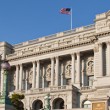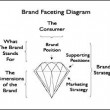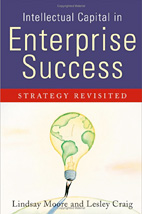The Library of Congress is the central repository for the knowledge-base of the U.S. government. The Library’s mission is to support the Congress in fulfilling its constitutional duties and to further the progress of knowledge and creativity for the benefit of the American people.
Archives for August 2011
United States Capitol, Washington DC
The American Capitol Building is the meeting place of the U.S. Congress. Built in 1793, its neoclassical style has characterized many U.S. government buildings. Prior to establishing the nation’s capital in Washington, D.C., the United States Congress and its predecessors had met in Philadelphia, New York City, and a number of other locations.
Library at Strahov Monastery, Prague, Czech Republic
The theological hall of baroque library at Strahov Monastery, Prague, Czech Republic. Before the rise of the modern university, monasteries held much of the knowledge in the Western world. In 1670 Jeroným Hirnheim, a philosopher and theologist became the abbot of Strahov. His greatest work, which has survived to the present days, was the building of the new library, the present Theological Hall completed in 1679.
Branding Radioactive Waste
One of the biggest problems in branding is branding across cultures and on a global basis. However, even such a difficult undertaking as global branding is dwarfed by the magnitude of branding radioactive waste, not only across global cultures, but thousands of years into the future.
Branding Commodity Products
Producers of raw materials and commodity products often overlook the opportunity to increase their gross margins, create consumer demand for their specific items(s), and build valuable Brand Equity by employing the branding practices made successful by consumer packaged goods enterprises.
Has Strategy Changed?
Has corporate strategy changed? It seems we are out-of-date every time we turn around. Is there anything that isn’t changing? What about strategy? Has it changed? Today, many question and some undervalue the worth of strategy, believing either that they don’t need it, or that they already have it.
Brand Faceting and Marketing Strategy
Managing the growth and change of a Brand has always been difficult, requiring both art and wisdom. Most Brands are either over-managed and not allowed to change, or not managed at all and allowed to drift or even languish without strategic guidance or direction. The real art is to manage your Brand in such a way as to respect its natural expression. There is an art to it.
Building Market Capitalization With Intellectual Capital Assets
For every dollar of value contributed by tangible assets, two to four dollars more are being contributed to enterprise value by the intangibles. How can we make intangible assets, known as Intellectual Capital, actionable so we can use them to drive corporate valuation and stock price? Here is a simple way to think about the subject…
Changing Global Demographics
Population growth and sustained consumption are necessary to fuel the continued development of modern capitalism, both to provide a constant work force to drive productivity, and to ensure ongoing marketplace demand. The predicted population changes will, therefore, have profound implications for both business and the economy.





 As the knowledge-based economy expands, the companies and individuals that possess intangible intellectual assets, such as intellectual property, will need specialized expertise, strategic thinking, legal experience, and the wisdom necessary to manage intellectual assets.
As the knowledge-based economy expands, the companies and individuals that possess intangible intellectual assets, such as intellectual property, will need specialized expertise, strategic thinking, legal experience, and the wisdom necessary to manage intellectual assets.